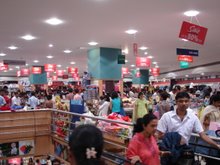It’s Time Marketers Explored Community-Specific Consumer
 INDIA has large regional and religious communities that present sizeable cultural segments that can be targeted by marketers as specific consumer segments. These segments are cohesive and unified by similar cultural beliefs, social mores and emotional drives which can be leveraged by marketers to position community specific brands. The recent NCAER survey indicates that both (Hindu and Muslim) communities have (near) equal purchasing power in urban and rural areas. The Muslim community as a large consumer segment offers a viable opportunity for marketers. Let us examine why? Muslim sects are unified in their belief system pertaining to the notions of Halal and Haram. There are religious proscriptions on Muslims with respect to consuming foods or using products that may contain ingredients considered Haram or defiling. Ingredients such as pig’s lard, gelatine, alcohol, etc are Haram and defiling. Thus brands that reassure their Muslim consumers and qualify the purity of their ingredients as Halal are sensitive to the community’s need for religious purity. Both branded foods and personal care products can offer Halal certified ingredients and create a strong preference for their brands. Another category that has utilised regional marketing to its advantage is media. Television channels, dailies and magazines have effectively segmented their offerings to cater to regional and language communities. This has paid dividends and deepened their reach. Clearly, regional consumer segments are sizeable for media channels to consider different offerings for linguistic/regional groups. Ekta Kapoor’s success can be attributed to her ability to profile various regional cultures in her story lines. Thus Kyunki Ki Saas Bhi features the Gujarati community, Kahani Ghar Ghar Ki features the Agarwal community, and Kasauti profiles the Bengali community. Cigarette and tea manufacturers have also successfully marketed brands to specific regional communities based on palate preferences for strength. Since strength is equated by most consumers with machismo and maleness, marketers have been able to position brands like Top Star dust tea and Scissors cigarettes on regional and community-specific renditions of machismo. For example, Scissors caters to the southern consumer and his need for a stronger smoke and a powerful male stereotype which showcases a man’s heroic qualities. The question arises, why is regional or community-specific marketing so valuable? I believe its value lies in what it offers the marketer:
INDIA has large regional and religious communities that present sizeable cultural segments that can be targeted by marketers as specific consumer segments. These segments are cohesive and unified by similar cultural beliefs, social mores and emotional drives which can be leveraged by marketers to position community specific brands. The recent NCAER survey indicates that both (Hindu and Muslim) communities have (near) equal purchasing power in urban and rural areas. The Muslim community as a large consumer segment offers a viable opportunity for marketers. Let us examine why? Muslim sects are unified in their belief system pertaining to the notions of Halal and Haram. There are religious proscriptions on Muslims with respect to consuming foods or using products that may contain ingredients considered Haram or defiling. Ingredients such as pig’s lard, gelatine, alcohol, etc are Haram and defiling. Thus brands that reassure their Muslim consumers and qualify the purity of their ingredients as Halal are sensitive to the community’s need for religious purity. Both branded foods and personal care products can offer Halal certified ingredients and create a strong preference for their brands. Another category that has utilised regional marketing to its advantage is media. Television channels, dailies and magazines have effectively segmented their offerings to cater to regional and language communities. This has paid dividends and deepened their reach. Clearly, regional consumer segments are sizeable for media channels to consider different offerings for linguistic/regional groups. Ekta Kapoor’s success can be attributed to her ability to profile various regional cultures in her story lines. Thus Kyunki Ki Saas Bhi features the Gujarati community, Kahani Ghar Ghar Ki features the Agarwal community, and Kasauti profiles the Bengali community. Cigarette and tea manufacturers have also successfully marketed brands to specific regional communities based on palate preferences for strength. Since strength is equated by most consumers with machismo and maleness, marketers have been able to position brands like Top Star dust tea and Scissors cigarettes on regional and community-specific renditions of machismo. For example, Scissors caters to the southern consumer and his need for a stronger smoke and a powerful male stereotype which showcases a man’s heroic qualities. The question arises, why is regional or community-specific marketing so valuable? I believe its value lies in what it offers the marketer:


No comments:
Post a Comment